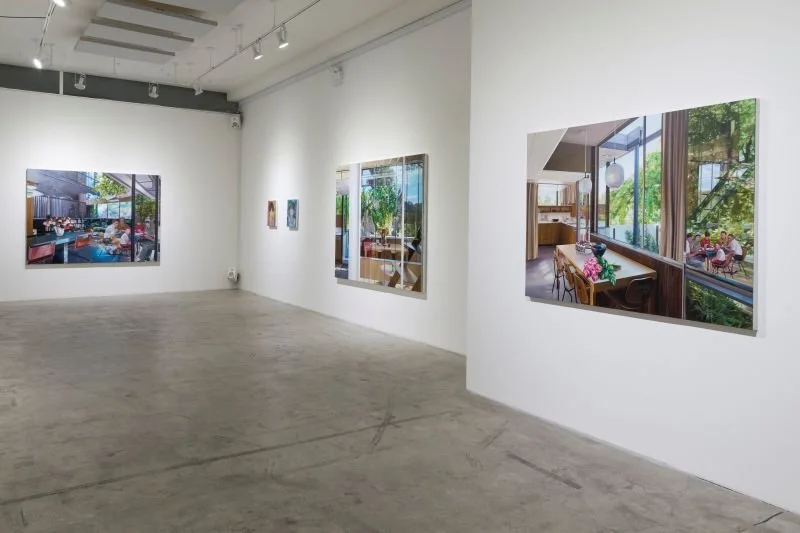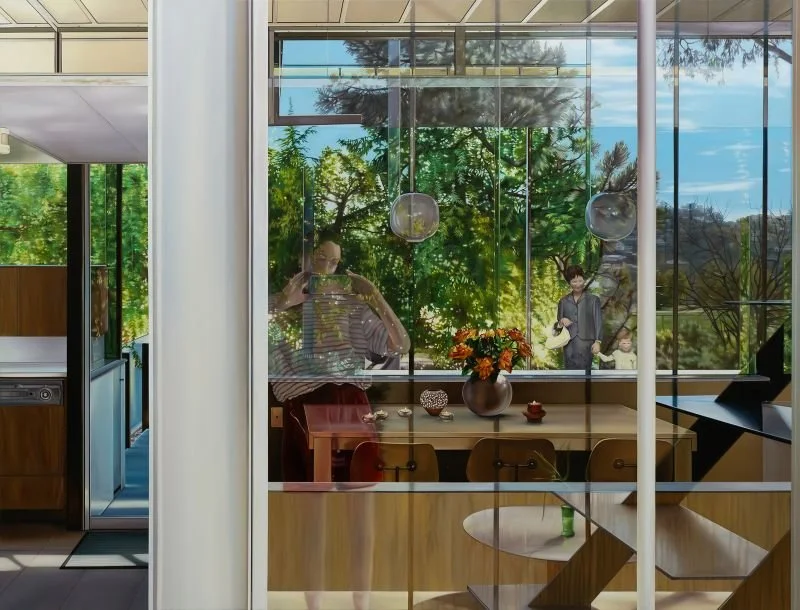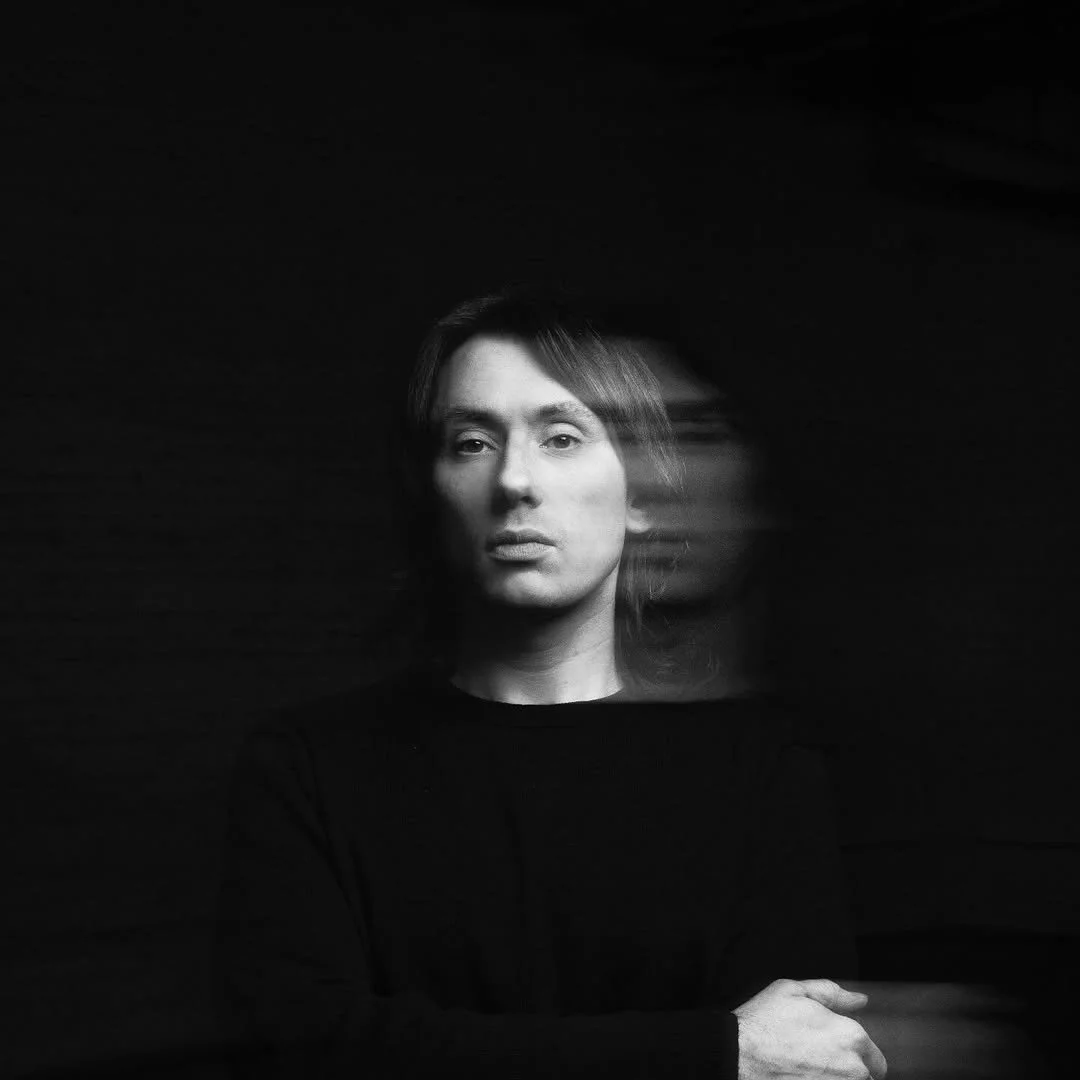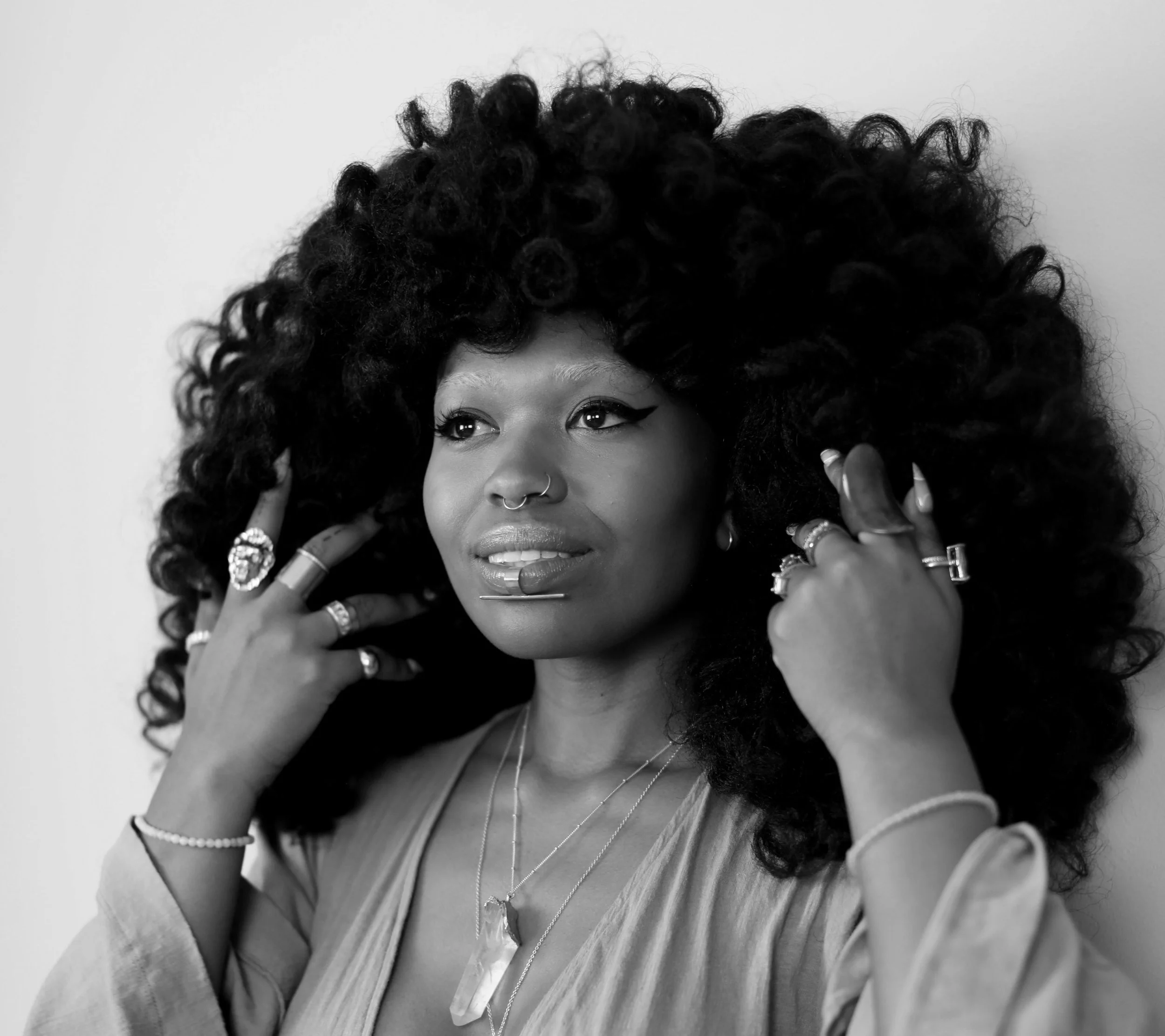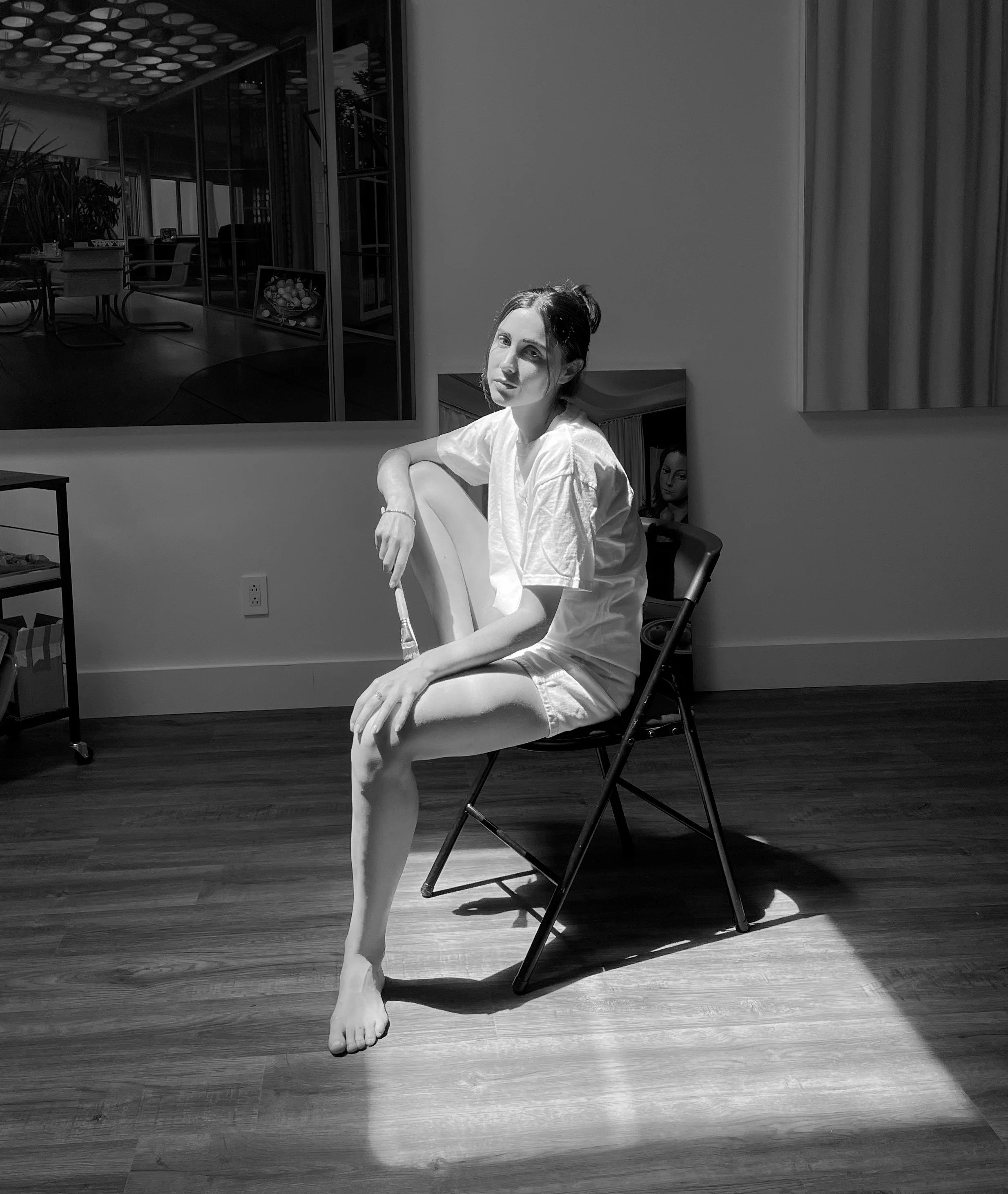Alina Grasmann's HOUSE OF THE SPIRITS
Alina Grasmann is a realist painter whose large-scale, site-specific series blur fact and fiction. Her works are inspired by her travels, American architecture, film, and literature. Each series contains about 10–20 paintings, all based on specific locations. Grasmann researches places and then visits them in real life, recording her experiences and the atmosphere through photographs.
Drawn to the narratives of each place, the sites become chamber play-like stages for reflections on memory, identity, and transience, inviting viewers to step inside and become part of the scene. Rather than illustrating existing myths about a place, she aims to create spaces for association in which new stories can emerge.
Grasmann’s new body of work, House of the Spirits, depicts the Neutra House, designed and built in Los Angeles in 1932 by Austrian-American architect Richard Neutra. The series debuted at a museum in Germany, Brühler Kunstverein, in May 2025. Her solo show, House of the Spirits, is on display at Fridman Gallery in New York through December 6, 2025.
Interview by Tyler Nesler
You've used unique architectural spaces as subjects for several of your series, such as the experimental community Arcosanti for Sculpting in Time, Haus Schminke for The Grand Buffet, and various Florida interior and exterior spaces for Florida Räume. When you visited the Neutra House, did you go with the intention of it being a subject, or were you inspired to paint it once you were there? What qualities in architectural spaces resonate with you and inspire you the most?
Places play a central role in all of my series. I often find myself deeply affected by certain spaces, and I think my underlying interest lies in understanding why they have such a strong impact on me. Specific architectural qualities particularly attract me; they seem to open up a deeper emotional access to a place.
Arcosanti, a continuing utopian urban experiment set in the Arizona desert, intrigued me because it opened up the possibility of imagining myself inside the spaces of a fully conceived city.
In Florida Räume, I work with the familiar image of Florida, something many think they know, even without firsthand experience. The series gathers the different sites I explored and blends them on the canvases into one imagined landscape.
Since my previous series, which was based on Haus Schminke in Löbau, Germany, I have been interested in the idea of the Kammerspiel, the focus on a single, contained setting. I continued this concept in my current series House of the Spirits. My focus has been narrowing over the years, moving from an entire state or city, such as Arcosanti, to a single house, and I feel that this reduction opens up new possibilities for me.
In spring 2022, I visited several architectural landmarks in California. I always prepare my series very thoroughly, and traveling and visiting sites is part of my working process. The visit to the Neutra House was impressive, even though there was no opportunity to spend time there alone and absorb the atmosphere, as I was used to doing for my previous series. It is a museum that can only be visited as part of a guided tour.
The house itself, however, offers an incredible wealth of painterly possibilities. When I travel, I cannot paint for a while, but being in the Neutra House immediately made me want to start painting again and return to my studio as soon as possible.
The building combines many materials and aspects that are of great interest to me in painting: metal, wood, a variety of surfaces, glass, and the interplay of interior and exterior. I think these qualities of the house, and my deep painterly interest in them, were among the reasons I decided to devote an entire series to it. Yet the true starting point was the fragmentarily preserved library, filled mainly with English and German books bearing personal dedications.
Alle Möglichkeit liegt bei uns
Porzellan
Manifestations of memory are a significant theme in House of the Spirits. In this series, how do you visually depict and explore memory as a fluid, non-linear presence?
“Memory” was the overarching idea that accompanied me throughout the creation of this series, and, in my view, it is what sustains the work conceptually.
The Neutra couple emigrated from Austria to Los Angeles in 1923. In the house that Richard Neutra later built for himself and his wife Dione, a library developed that held primarily English- and German-language books. Parts of this library were lost when the house burned almost completely to the ground in 1963 and had to be rebuilt. Yet even after the fire, the polyglot collection continued to grow. Many of the books that have survived include dedications, some from friends in the U.S., others from acquaintances overseas, written in a kind of German that is rarely spoken today.
From today’s perspective, these dedications sound slightly unusual, almost antiquated, and they triggered in me a strong sense of retrospection, a home away from home in which memories seem to resonate. This became an anchor point for me, a way into the house and ultimately into the series. I quote some of these book titles in my own painting titles, such as Als die Bäume noch grünten or Ferientage.
Als die Bäume noch grünten
Ferientage
I certainly do not want to tell the story of the Neutras, the former inhabitants of the house. This is not my story to tell. I do not see myself in a position to revive their history or to reconstruct what their home might have been like. What interests me instead is how memory persists within spaces, how it remains visible without being fixed or narrated. I imagine the house, with its history and its ghosts, becoming a stage for an intimate chamber play, a space open to anyone’s own thoughts and projections.
Across the series, I depict five rooms in ten paintings. I painted each room twice, once in a large format and once in a medium format, each time from a different perspective, and in doing so, I worked through and tried to incorporate both my own memories and those of others. During the period when I began working on this series, my grandfather had only recently passed away, and I was archiving his old photographs. I have to admit that a strong painterly urge guided me here as well, drawing me to paint some of the scenes and figures from these images. They therefore entered my paintings and became part of my visual vocabulary. To me, these photographs represent a kind of collective memory because they touch on something universal. Almost everyone knows those boxes of old family pictures. They are, of course, deeply personal documents, but because they resemble one another, they become almost interchangeable—and, for me, they turn into placeholders for memory itself.
In my paintings, the protagonists of these photographs often appear as reflections, as traces of the past that linger in the rooms and continue to resonate. I hope that memory becomes something continuously present, no matter the moment or the time in which one moves through the house.
Your family is displaced Silesian Germans. Could you briefly explain the history of Silesian Germans and how your connections to that culture made it especially important to preserve memories via photographs, and now, within these paintings?
My family comes from a small village in the Czech part of Silesia. For many generations, a German-speaking minority lived there as part of the former Czechoslovakia. It was only during the Third Reich that the region was annexed to Germany. After the end of the Second World War, the area returned to Czechoslovakia, and the German-speaking population was dispossessed and expelled. Many Silesian Germans had to leave their homes and rebuild their lives in other parts of Germany.
In these families, the memory of the former homeland played a central role. This constant looking back, towards a life, a landscape, and a place that had been lost, was a recurring theme in my own family as well. Yet for me it is not about nostalgia or national identity, but about the broader question of how memory functions: how it continues to live on in images, stories, and spaces, while remaining fragile and deeply subjective.
When I later began working with the Neutra House, I felt a resonance with this form of remembering. Not in a historical sense, but in the way that traces of the past can continue to inhabit a space. I am drawn to places that hold something preserved and something absent at the same time. Although the contexts of my family’s history and that of Richard Neutra are, of course, entirely different, they meet in this shared question of how memory persists and quietly continues to act within spaces.
Der Tag wird kommen
Die Kunst zu Hause zu sein
You archived your grandfather’s photographs as you prepared for this series, and both the pictures and the people in them appear throughout the works in House of the Spirits. How have you attempted to bridge personal and collective memory in these works?
As I see it, this sense of collective memory emerges especially through these old photographs. As I said earlier, although these photographs were deeply personal to my grandfather, they carry something universal for me. They show people and situations from an era that feels familiar to many, as countless families have photos of the same kind. Many of the people in these images have already passed away or are now of advanced age. They hold memories of war, of rupture, and of new beginnings, and I think it matters that these memories do not fade completely.
In this series, I am concerned with different forms of remembering that can exist simultaneously and together create a larger whole. On the one hand, I try to open up personal memories and use them as a kind of blueprint for a collective memory. On the other hand, the fragile and dissolving nature of memory also plays a significant role for me, something I witnessed closely through my grandfather’s Alzheimer’s disease. My collage-like compositions allow these different layers of perception and memory to flow into one another.
Ferientage (detail)
Neue unfrisierte Gedanken
Von den letzten Dingen
Roses are prominently featured in this series. What is their symbolism here?
It comes from a small, almost humorous episode in my family history. After the expulsion and the first difficult years that followed, my entire family, three small family units, ended up finding their new homes in the same street, called Rosenblathstraße, which translates to “Rose Leaf Street.” My grandfather planted a rosebush in front of their apartment.
For me, this rosebush was always a quiet symbol of putting down roots in a new place, a gesture of anchoring oneself after displacement. When I was working on the series, I felt that the house in Los Angeles, the Neutra House, needed a similar symbolic gesture. The roses became a sign of how memory and new beginnings intertwine.
Hernach
Der Planet auf dem Tisch
One striking element in several of these works is the intricate depictions of reflective surfaces such as mirrored walls and windows. What were some of your techniques to display the objects and people reflected in these surfaces in ways that make the viewer question whether they see something "real" or illusory?
These reflective surfaces connect inside and outside, past and present. What interests me is that they show something real and at the same time something that withdraws, a state between reality and memory.
In my painting Als die Bäume noch grünten, I appear as a reflection myself. For me, this was a way of inscribing my own presence into the space without actually being visible. The reflection becomes a place where layers of time and memory overlap, a moment in which everything seems to occur at once.
I try to create spaces in which reality and illusion cannot be separated. Everything is present, yet nothing can be held on to.
Installation photographs by Jordan Benton
Artist photograph ©️ Katarina Sopčić
Did you like what you read here? Please support our aim of providing diverse, independent, and in-depth coverage of arts, culture, and activism.
Tyler Nesler is a New York City-based writer, editor, and podcaster. He is the Founder and Editorial Director of INTERLOCUTOR Magazine.

